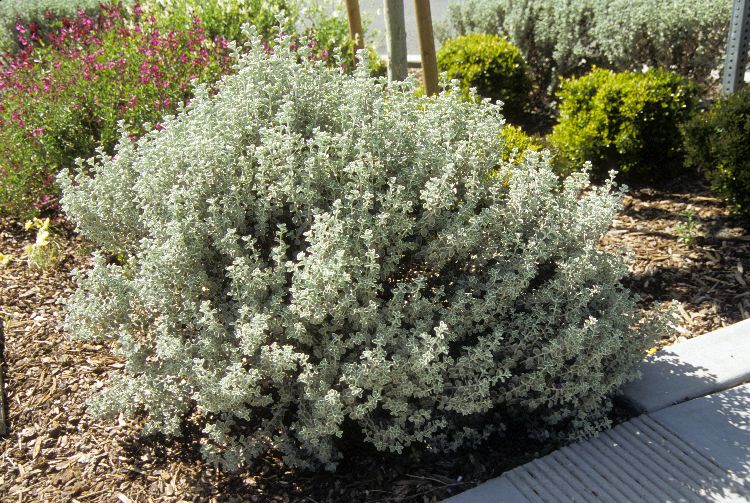
Leucophyllum frutescens 'Compacta'
Compact Texas Ranger
The original Texas Ranger has grayish leaves. 'Compacta' is a smaller version, and grows to 3 feet high. Canopy coverage: 13 square feet.
[Read More]Leucophyllum frutescens 'Green Cloud'
Green Cloud Texas Ranger
The original Texas Ranger has grayish leaves. Look for improved selection 'Green Cloud' with light green leaves. Canopy coverage: 50 square feet.
[Read More]Leucophyllum frutescens 'Silver Cloud'
Silver Cloud Texas Ranger
The original Texas Ranger has grayish leaves. Look for improved selection 'Silver Cloud' with silvery gray leaves. Canopy coverage: 50 square feet.
[Read More]Leucophyllum frutescens 'White Cloud'
White Cloud Texas Ranger
The original Texas Ranger has grayish leaves. Look for improved selection 'White Cloud', which produces white flowers. Canopy coverage: 50 square feet.
[Read More]Leucophyllum laevigatum
Chihuahuan Rain Sage
Chihuahuan Sage is a rounded, wide-spreading shrub. Flowers are fragrant. Avoid heavy pruning to get more flowers. Canopy coverage: 13 square feet.
[Read More]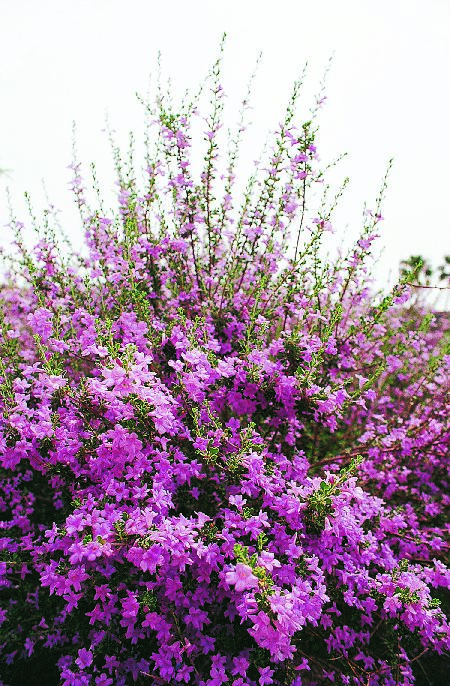
Leucophyllum langmaniae
Cinnamon Sage
Cinnamon Sage has a rounded form that is evergreen and similar to other Texas Rangers, but this species tends to be more dense. 'Rio Bravo' is an improved selection. Canopy coverage: 20 square feet.
[Read More]Leucophyllum langmaniae 'Lynn's Legacy'
Lynn's Legacy Texas Ranger
This Texas Ranger produces a dense, rounded evergreen shrub. It is reported that it doesn't require changes in humidity to prompt flowering, so expect more flowers during summer. Canopy coverage: 20 square feet.
[Read More]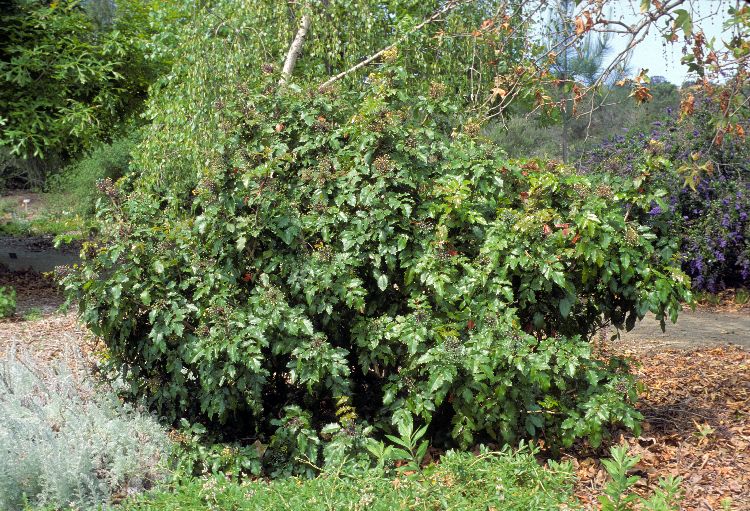
Mahonia aquifolium
Oregon Grape Holly
The leaves of Oregon Grape Holly change colors with the seasons. They are bronze when new, turning purple or bronzy hues in winter. Showy yellow spring flowers are followed by black berries in summer. Canopy coverage: 20 square feet.
[Read More]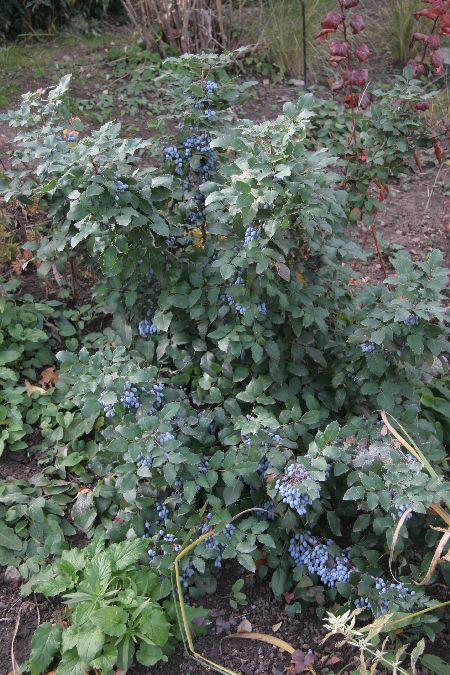
Mahonia aquifolium 'Compacta'
Compact Oregon Grape Holly
Compacta' is a smaller version of Oregon Grape Holly, ideal for small-space locations. Like its big brother, the leaves change colors with the seasons. They are bronze when new, turning purple or bronze in winter. Showy yellow spring flowers are followed by blue-black berries in summer. Canopy coverage: 7 square feet.
[Read More]Mirabilis multiflora
Desert Four O'clock
An interesting shrubby perennial with profuse numbers of dramatic flowers. It is temporary; it dies back with winter cold, renewing growth the following spring. Note that flowers in photos will unfurl into hibiscuslike blooms. Canopy coverage: 13 square feet.
[Read More]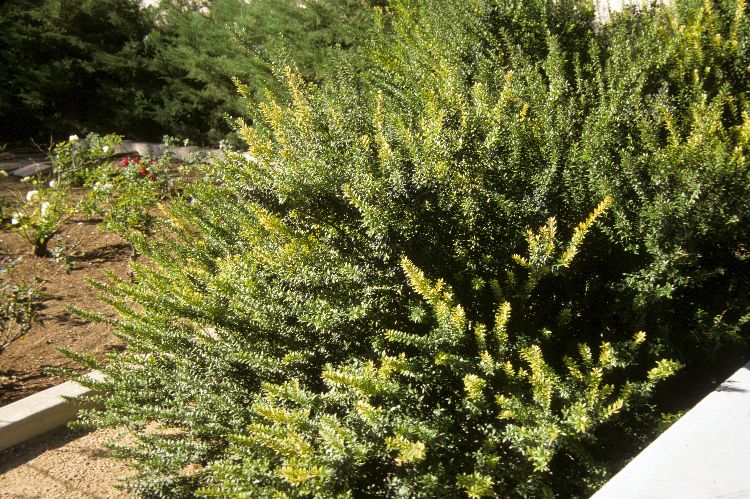
Myrtus communis
True Myrtle
Look for 'Compacta', Dwarf Myrtle, for a smaller scale planting. It grows to 4 feet high and as wide. 'Variegata' has bright yellow-green leaves. Canopy coverage: 79 square feet.
[Read More]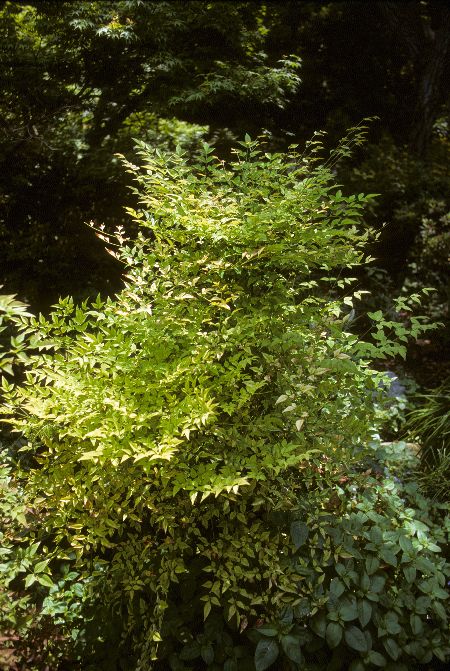
Nandina domestica
Heavenly Bamboo
Heavenly Bamboo looks much like bamboo but is unrelated. Avoid planting in afternoon sun—better with north or eastern exposure. Leaves often turn shades of red and orange in fall following exposure to sun and cold. Canopy coverage: 13 square feet.
[Read More]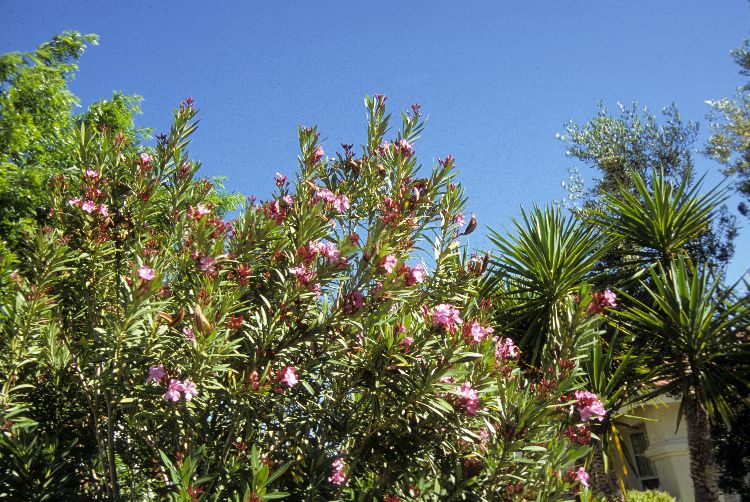
Nerium oleander
Oleander
One of the most versatile shrubs, a workhorse in the landscape, accepting of tough conditions. Be aware that all plant parts are poisonous. 'Petite Pink' is a dwarf selection, to just 4 feet high. It is slightly less hardy to cold. Canopy coverage: 79 square feet.
[Read More]Olea europaea 'Little Ollie'
Little Ollie Olive
This is a dwarf version of Olea europaea. (See Trees category.) It does not produce fruit. Canopy coverage: 28 square feet.
[Read More]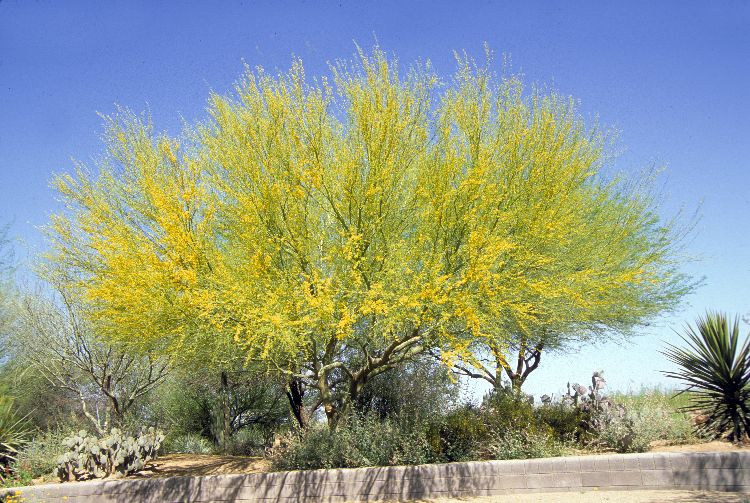
Parkinsonia microphylla
Foothills Palo Verde
Foothills Palo Verde is naturally more shrublike in form but it can be pruned to become a small tree with character. Canopy coverage: 177 square feet.
[Read More]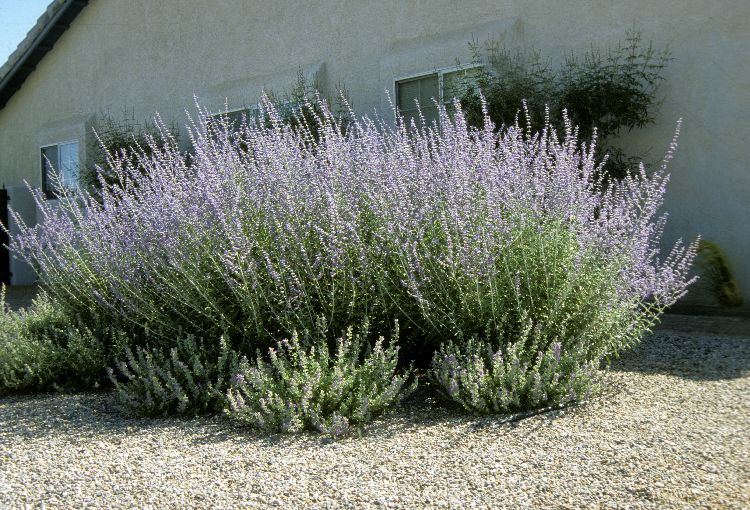
Perovskia atriplicifolia
Russian Sage
Russian Sage is a large, upright plant that can be used much like a deciduous shrub or large flowering perennial. A long bloomer that is easy to grow. Canopy coverage: 13 square feet.
[Read More]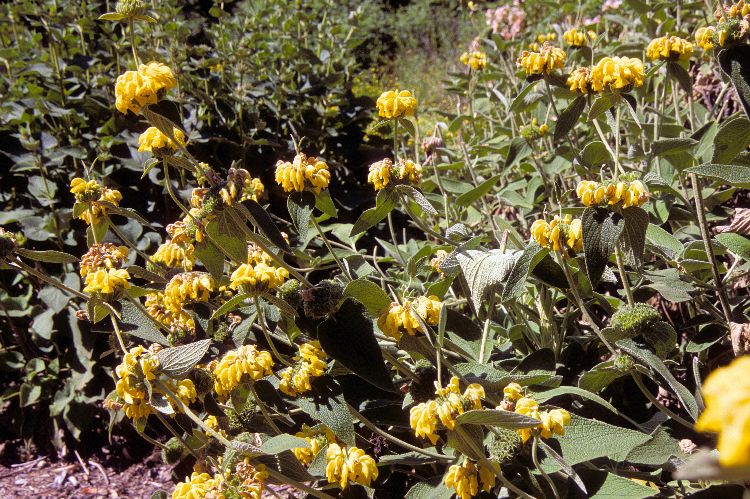
Phlomis fruticosa
Jerusalem Sage
Jerusalem Sage is shrublike in form, and blends well with other dry-climate plants. Accepts full sun in some regions but overall better with afternoon shade, particularly in hot summer climates. Foliage is aromatic when brushed. Flowers are borne in whorls of yellow along upper stems. Canopy coverage: 7 square feet.
[Read More]Phlomis russeliana
Sticky Jerusalem Sage
Sticky Jerusalem Sage grows as a clumping low shrub or groundcover with large, heart-shaped leaves. Flowers are borne on tall stems like other Phlomis species. Spreads by underground runners. Canopy coverage: 3 square feet.
[Read More]Photinia serratifolia
Chinese Photinia
A versatile tree or perhaps more commonly grown as a large, spreading shrub. Prune to maintain desired size and form. Best with some protection from the sun in hot summer regions. New growth is light green to coppery bronze, then turns dark to medium green. Showy red berries follow spring flowers and adorn the plant for a long time. Susceptible to mildew along the coast. Canopy coverage (tree form): 707 square feet.
[Read More]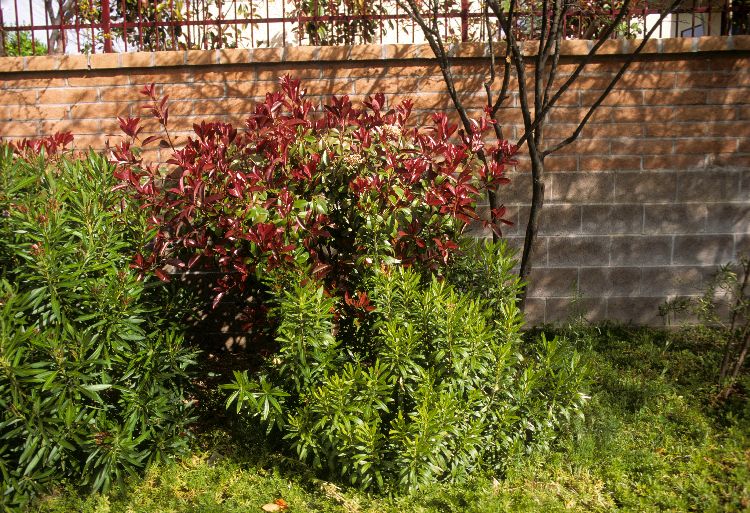
Photinia x fraseri
Redtip Photinia
Redtip Photinia makes an excellent screen or background planting. New growth in early spring is bright coppery red, which gradually turns medium green. Canopy coverage: 20 square feet.
[Read More]Pinus mugo 'Slowmound'
Slowmound Mugo Pine
Mugo Pine is a highly variable species. Best to select known cultivars such as 'Slowmound' to get the size and shape you want. Avoid the temptation to prune or shape plants; allow the natural mounding form to shine through. Canopy coverage: 28 square feet.
[Read More]